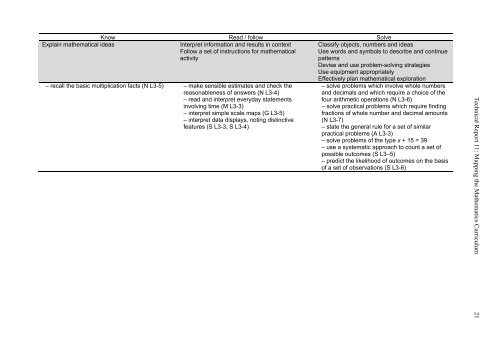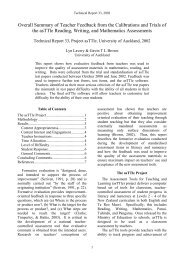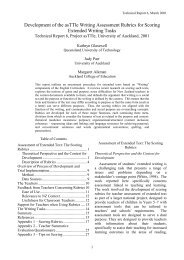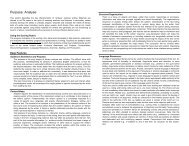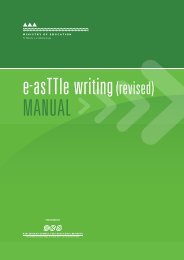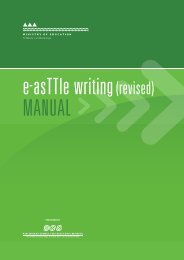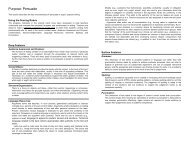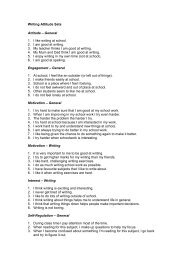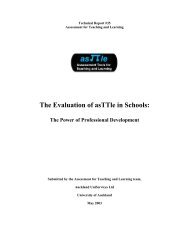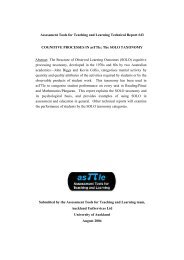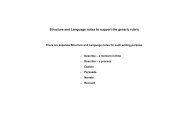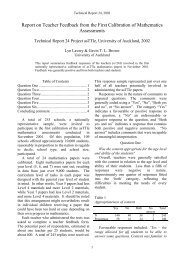11. Maths in the NZ curriculum 2001.pdf - e-asTTle - Te Kete Ipurangi
11. Maths in the NZ curriculum 2001.pdf - e-asTTle - Te Kete Ipurangi
11. Maths in the NZ curriculum 2001.pdf - e-asTTle - Te Kete Ipurangi
You also want an ePaper? Increase the reach of your titles
YUMPU automatically turns print PDFs into web optimized ePapers that Google loves.
Know Read / follow Solve<br />
Expla<strong>in</strong> ma<strong>the</strong>matical ideas<br />
Interpret <strong>in</strong>formation and results <strong>in</strong> context<br />
Follow a set of <strong>in</strong>structions for ma<strong>the</strong>matical<br />
activity<br />
Classify objects, numbers and ideas<br />
Use words and symbols to describe and cont<strong>in</strong>ue<br />
patterns<br />
Devise and use problem-solv<strong>in</strong>g strategies<br />
Use equipment appropriately<br />
– recall <strong>the</strong> basic multiplication facts (N L3-5) – make sensible estimates and check <strong>the</strong><br />
reasonableness of answers (N L3-4)<br />
– read and <strong>in</strong>terpret everyday statements<br />
<strong>in</strong>volv<strong>in</strong>g time (M L3-3)<br />
– <strong>in</strong>terpret simple scale maps (G L3-5)<br />
– <strong>in</strong>terpret data displays, not<strong>in</strong>g dist<strong>in</strong>ctive<br />
features (S L3-3, S L3-4)<br />
Effectively plan ma<strong>the</strong>matical exploration<br />
– solve problems which <strong>in</strong>volve whole numbers<br />
and decimals and which require a choice of <strong>the</strong><br />
four arithmetic operations (N L3-6)<br />
– solve practical problems which require f<strong>in</strong>d<strong>in</strong>g<br />
fractions of whole number and decimal amounts<br />
(N L3-7)<br />
– state <strong>the</strong> general rule for a set of similar<br />
practical problems (A L3-3)<br />
– solve problems of <strong>the</strong> type x + 15 = 39<br />
– use a systematic approach to count a set of<br />
possible outcomes (S L3–5)<br />
– predict <strong>the</strong> likelihood of outcomes on <strong>the</strong> basis<br />
of a set of observations (S L3-6)<br />
<strong>Te</strong>chnical Report 11: Mapp<strong>in</strong>g <strong>the</strong> Ma<strong>the</strong>matics Curriculum 21


